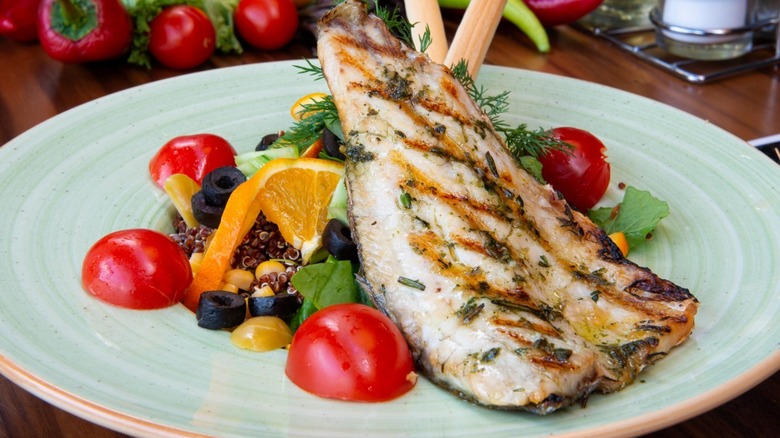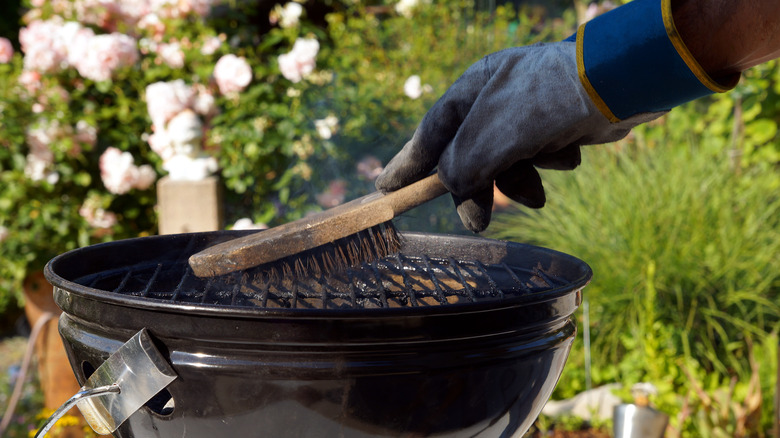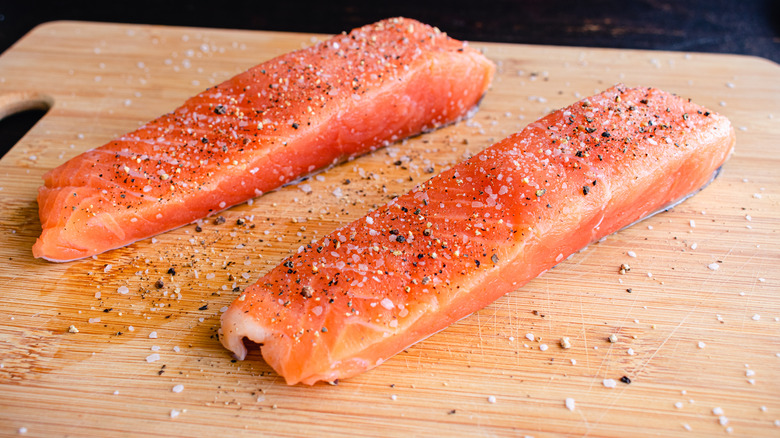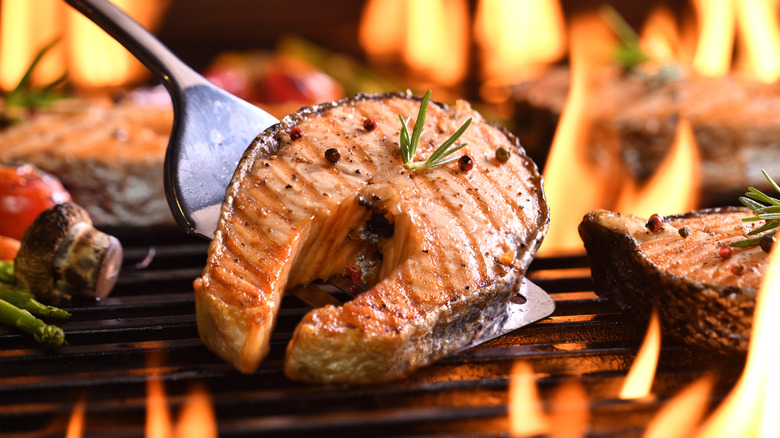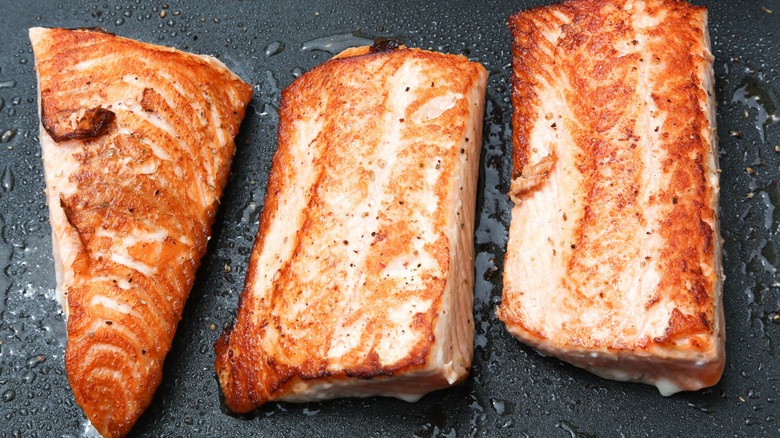How To Keep Fish From Flaking On The Grill, According To A Grill Master
Picture a backyard barbecue in your mind: The sky is blue, the sun is shining, the kids are playing, the beer is flowing, and the grill is fired up. What's on that grill? If you're like most of us, you're probably imagining thick, juicy steaks or burgers — or, if you're a realist on a budget, maybe some humbler steaks of the hot dog variety. You might also be thinking about hearty chicken, or, on the vegan side of things, perhaps portobello mushrooms, ears of corn, or even sliced grilled pineapple. What you may not be envisioning on those hot grates, however, is fish fillets.
That's probably because there seems to be so much room for error. Either the fish is going to stick to the grates, or it might fall apart into flaky bits and slip into the flames below. It just seems easier to stick with pan-frying or oven-baking when it comes to cooking those delicate fish fillets. Weber Grill Master Dustin Green, however, says you need not fear grilling fish. He shared a few tips with Mashed for flake-free fish grilling that are sure to result in some splendid salmon or heavenly halibut.
First, properly prepare the grill
The first step to properly grilled anything, according to Green, is to make sure your grill is as clean as can be and has been heated to the proper temperature. Luckily, there is a bit of overlap between these processes, allowing for some multitasking.
As the master griller explains, you should first preheat the grill on its highest setting for at least 10 minutes and up to 15 minutes. Once the grill is hot, Green says to take your grill brush and scrub the grates until they're free of any packed-on gunk. (You may also want to use a damp rag to wipe off any soot.) At this point, Green says to turn your grill down to "the proper cooking temperature," which will usually range from 450 to 500 degrees Fahrenheit. There is one more grilling mistake you should not be making prior to cooking the fish, though: "DO NOT OIL THE GRATES."
Oil the fish, not the grill
Instead of applying oil to the grill grates, Green tells us, you should be applying it directly to the fish. "By oiling the fish, we are adding a layer that helps the fish not stick," he explains. But wait, that's not all that the oil does! After you've oiled the fish, sprinkle it all over with whatever dry seasonings you like. The oil, Green assures us, "also serves as a glue for our seasonings."
What type of oil should we be using for our fish? Green says olive oil is best, but not the extra-virgin kind. (That's better kept for salad dressings and non-cooking applications.) Plain olive oil "has a good smoke point for fish," he says in reference to the temperature at which an oil will start to burn. A low smoke point is not desirable here, as the oil may burn before the fish is done cooking.
Know which side of the fish to cook first
Once your grill and your fish are ready to go, it's time to introduce them to one another. Be careful how you place the fish on the grill grates, though, since the positioning is different depending on whether you're cooking the fish with its skin on or off. If you're cooking a skinless fillet, Green advises placing it on the grill grates "presentation side down." The presentation side is simply the non-skin side that will appear face-up on the plate. "You want to hear a nice sizzle once [the fish is] placed on the grate." When the fish is done cooking on the first side, flip it over carefully and cook the other side on a clean part of the grill.
If you're cooking fish with the skin on, Green says to cook it skin-side down first, adding that "there's also no need to flip." Simply cook your fish to the desired temperature, allowing it to develop a gloriously crispy skin, and let it rest before serving.
Consider using a plancha
Finally, if you really want to make your fish-grilling foolproof, Green advises using a cooking tool called a plancha. "A plancha," he explains, "is a grilling accessory that can be used like a sauté pan." You should place the plancha on the grill while it is preheating so it can get nice and hot, too. Once both grill and plancha reach the desired temperature, you will then oil the plancha. (Yes, it's a bit confusing — don't oil the grates, but do oil the plancha!)
When you're using a plancha, you'll still oil the fish since it will help those seasonings to stick. The fish goes on the plancha presentation-side down and gets flipped after the first side is cooked. As Green describes, "The plancha gives a beautiful, even sear to the fish." If you don't want to drop the big bucks on a plancha (Royal Design sells these for $95), you can also employ the "barrier method" of keeping the fish from sticking to the grill by separating it from the grates with aluminum foil or even lemon slices.
